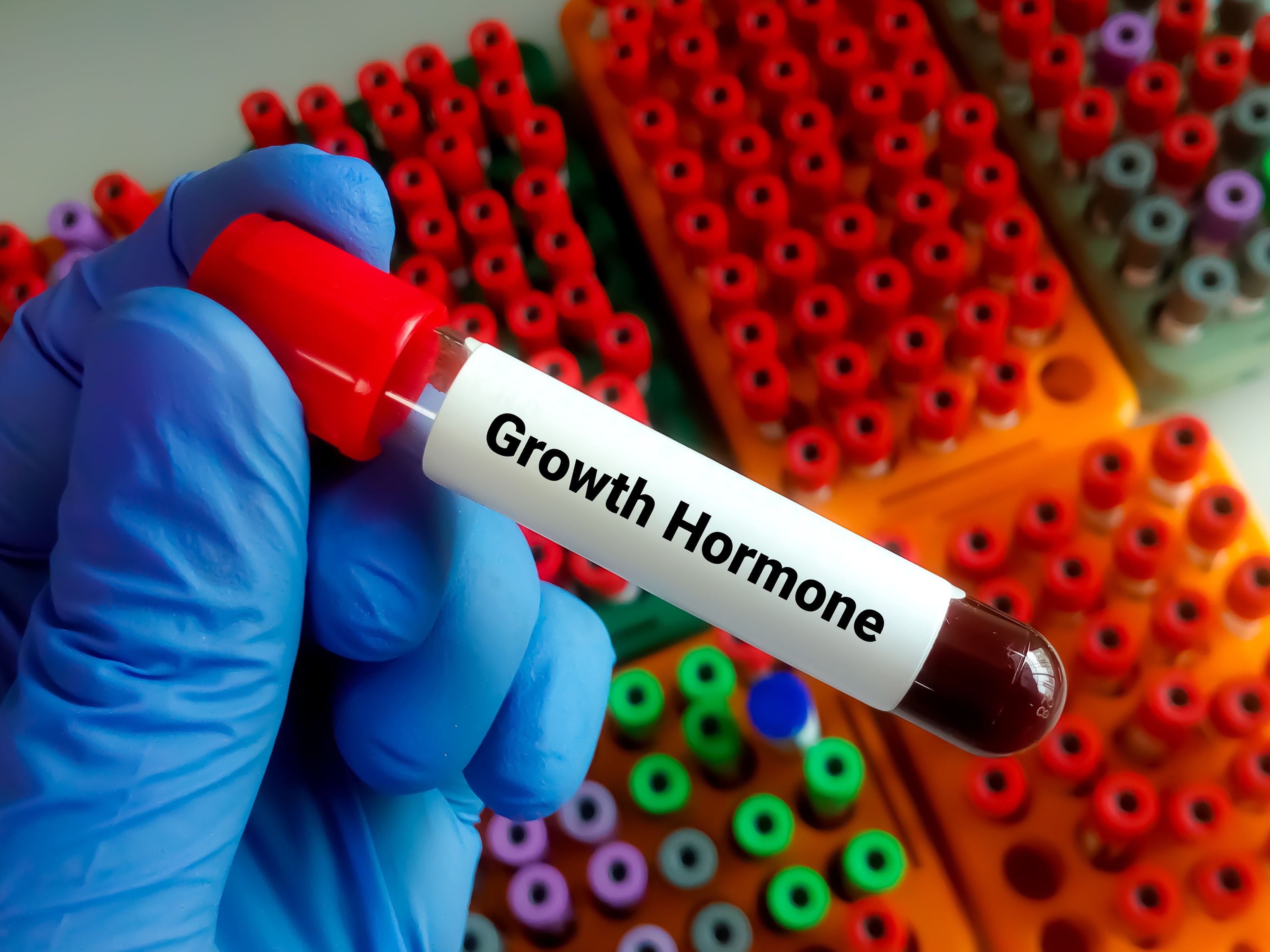- Bone Health
- Immunology
- Hematology
- Respiratory
- Dermatology
- Diabetes
- Gastroenterology
- Neurology
- Oncology
- Ophthalmology
- Rare Disease
- Rheumatology
Biosimilar Growth Hormone Reveals Efficacy, Safety in Real-World Pediatric PATRO Study
A large-scale study found that Omnitrope, a biosimilar growth hormone, is effective and well-tolerated in treating various growth disorders in children.
Blood sample for growth hormone test | Image Credit: Saiful52 - stock.adobe.com

Omnitrope, a biosimilar somatropin, which is a recombinant of human growth hormone (rhGH), expressed effective and well tolerated treatment in pediatric patients.
The EMA approved Omnitrope in 2006 as their first biosimilar approval. Recombinant human growth hormone replacement therapy is often used to treat children born small for gestational age (SGA), Turner Syndrome (TS), children with idiopathic short stature (ISS), Prader-Willi syndrome (PWS), chronic renal insufficiency (CRI), and Noonan syndrome. The FDA has also approved Omnitrope, however, because it was approved before the establishment of the biosimilars approval pathway, it is not legally considered a biosimilar in the US.
The pediatric patients treated with Omnitrope (PATRO) trial was an observational, multicenter, international, longitudinal study. Patient data were included in electronic case report forms that were completed at each routine visit and were entered into a web-based electronic data collection system.
Data collection went from September 1, 2007 to July 23, 2020. Eligible patients included a total of 7359 male or female infants, children, or adolescents who received biosimilar rhGH. Patients enrolled from 304 different sites among 15 countries.
At baseline, the study included more male participants than female participants (59.1% vs 40.9%). Collectively, growth hormone deficiency was the most common indication treatment was necessary, along with SGA (57.9% and 26.6%, respectively). Almost all patients were treatment-naïve at baseline (86%).
The standard deviation (SD) of exposure to biosimilar rhGH was 3.66 years (GHD: 3.56 years; TS: 3.54 years; CRI: 2.77 years; SGA: 3.86 years; PWS: 4.97 years; ISS: 3.22 years; other: 3.66 years).
Treatment discontinuation was primarily due to patients reaching adult height or bone age maturity (12.1%). Adverse events (AEs) were the main reason for discontinuation of treatment in 140 patients (1.9%), followed by lost to follow-up, site closure, or the patient reached near-adult height (8.1%, 8%, 8%, respectively).
There were 835 AEs in 614 patients and 113 serious adverse events (SAEs) found among 84 patients, likely related to biosimilar rhGH. Headache, injection-site pain, injection-site hematoma, and arthralgia were among the most common AEs but only affected a small number of patients. Hypothyroidism and sleep apnea syndrome, reported in less than 1% of patients, were the most frequent SAEs suspected to be a reaction to the medication.
The incidence rate (IR) for developing type 1 diabetes mellitus (T1D) or T2D was 0.11 per 1000 person-years (PY), across all indications. In patients born SGA, the IR for developing T2D was 0.13 per 1000 PY and 0.86 per 1000 PY in patients with PWS. Newly developed malignancies had an IR of 0.26 per 1000 PY across all indications with 0.22 primary malignancies per 1000 PY across all patients.
In as early as 6 months, both treatment-naïve and pretreated patients expressed treatment effectiveness among 6589 patients with sustained catch-up growth observed across all indications. Treatment-naïve patients had a median (range) height score increase from baseline by a median range of 0.65 (–1.5 to 3.3) at 1 year and 1.79 (–3.7 to 6.2) after 5 years. Pretreated patients had an SD score increase from baseline by a median range of 0.24 (–3.8 to 2.9) at 1 year and 0.73 (–1.4 to 3.7) after 5 years.
The study was limited by the likelihood of missing data that risks alternative results and potential conclusions. Assessments and laboratory tests were led locally instead of centrally, which could create variations among centers. Lastly, with some AEs, like malignancies, developing over several years, the patient follow-up period should be studied further.
Authors conclude the study offers, “additional reassurance to health care professionals and patients that these agents are as effective and well tolerated as others, thus widening patients’ access to life-changing treatments worldwide.”
Reference
Loche S, Kanumakala S, Backeljauw P, et al. Safety and effectiveness of a biosimilar recombinant human growth hormone in children requiring growth hormone treatment: Analysis of final data from PATRO children, an international, post-marketing surveillance study. Drug Des Devel Ther. 2024;18:667-684. doi:10.2147/DDDT.S440009
Newsletter
Where clinical, regulatory, and economic perspectives converge—sign up for Center for Biosimilars® emails to get expert insights on emerging treatment paradigms, biosimilar policy, and real-world outcomes that shape patient care.
